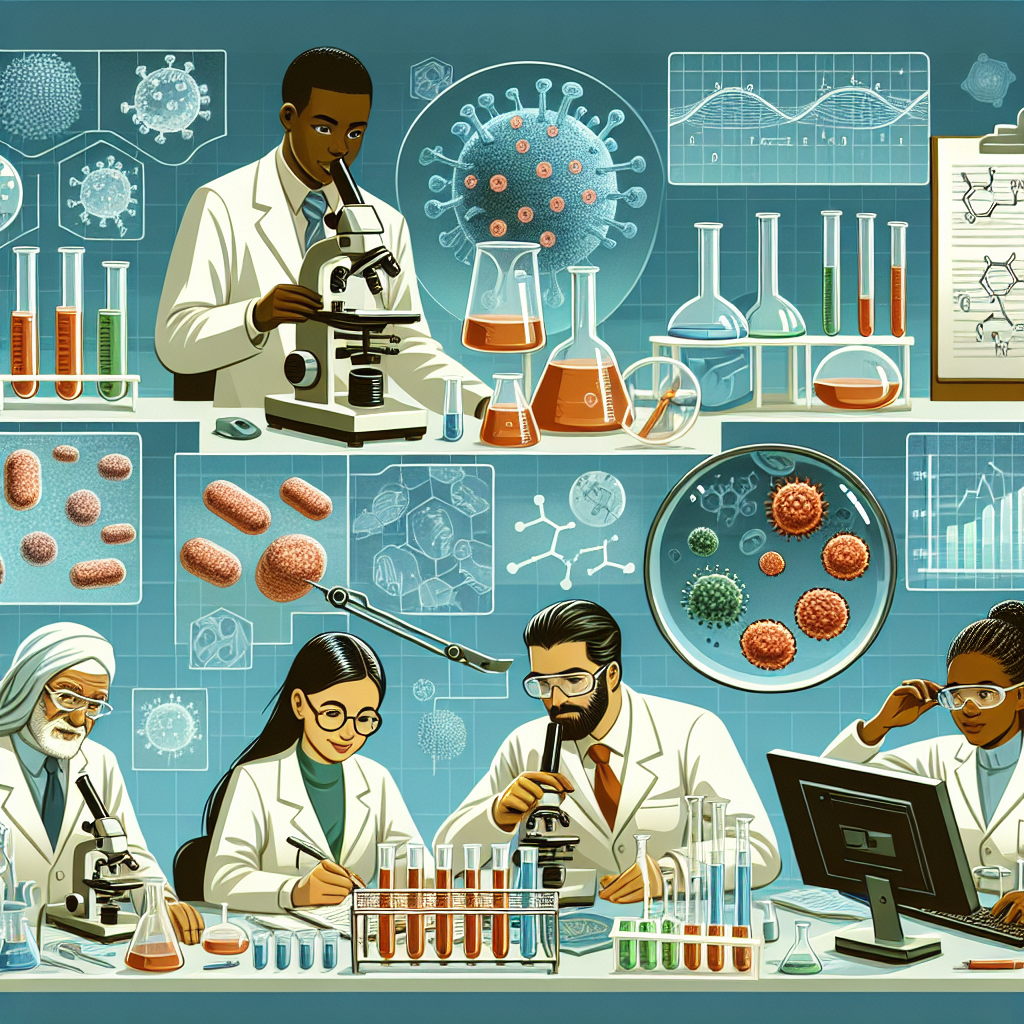
Exploring the Potential Future Trends in Antibiotic Discovery
In a groundbreaking study, a team of researchers has utilized artificial intelligence (AI) and graph neural networks to identify chemical substructures that contribute to the selective antibiotic activity. This innovative approach has led to the discovery of a new class of antibiotics that exhibit promising in vitro and in vivo activity against Gram-positive bacteria, including the notorious Staphylococcus aureus.
Unveiling a New Era in Antibiotic Discovery
The emergence of antibiotic-resistant bacteria has become a significant global concern in recent years. Traditional methods of drug discovery are often slow, costly, and not always effective in identifying novel compounds with potent antimicrobial properties. However, the integration of AI and machine learning in the field of drug discovery has opened up exciting new possibilities.
This study utilized an artificial-intelligence graph neural network, a cutting-edge technology that combines elements of graph theory and AI algorithms. By training this network on vast experimental datasets consisting of over 12 million compounds, the researchers were able to identify specific chemical substructures associated with selective antibiotic activity.
Discovering Promising Antibiotics
The identification of a new class of antibiotics that demonstrates potent activity against Gram-positive bacteria, including Staphylococcus aureus, is undoubtedly a breakthrough in the fight against antibiotic resistance. These findings provide hope for the development of more effective treatments against bacterial infections that have previously proven challenging to combat.
Although the specific details regarding the structure and mechanism of action of these newly discovered antibiotics haven’t been disclosed yet, the potential implications are immense. Researchers anticipate that this discovery could pave the way for the development of novel drugs that target specific bacterial strains, minimizing the risk of resistance.
Predictions for Future Trends
Based on this remarkable achievement, it is evident that the integration of AI and machine learning in drug discovery has the potential to revolutionize the field. Here are some predictions for future trends:
- Accelerated Drug Discovery: AI algorithms and machine learning can significantly speed up the process of identifying potential drug candidates by quickly analyzing huge datasets. This could lead to more rapid and efficient development of new antibiotics.
- Improved Targeted Therapies: The utilization of AI in analyzing and understanding specific chemical substructures associated with antibiotic activity can aid in the design of more targeted therapies. Tailoring drugs to target specific bacterial strains can enhance treatment effectiveness.
- Combating Antibiotic Resistance: AI-driven drug discovery can play a crucial role in combating antibiotic resistance by identifying compounds that are less likely to lead to the development of resistance mechanisms. This can potentially extend the lifespan of existing antibiotics.
- Enhanced Safety and Efficacy: The integration of AI technologies in drug discovery allows for a more comprehensive understanding of the safety and efficacy profiles of potential drugs. This can help researchers identify compounds with a higher chance of success during clinical trials.
Recommendations for the Industry
Based on these emerging trends, it is clear that the pharmaceutical industry should embrace and invest in AI technologies for drug discovery. Here are some recommendations:
- Collaboration and Data Sharing: Encouraging collaboration between pharmaceutical companies, research institutions, and AI experts can lead to the sharing of diverse datasets and expertise, fostering innovation in the field.
- Investment in AI Infrastructure: Developing robust AI infrastructure, including powerful computational resources and specialized algorithms, is essential to fully harness the potential of AI in drug discovery.
- Ethical Considerations: As AI technologies become more prevalent in drug discovery, it is crucial to address ethical concerns such as data privacy, bias, and transparency. The development of guidelines and regulatory frameworks can ensure responsible and unbiased use of AI in the industry.
- Education and Training: Promoting education and training programs that empower researchers and scientists with AI skills is vital for driving innovation in the field of drug discovery. This can lead to a more seamless integration of AI technologies in the industry.
In conclusion, the recent discovery of a new class of antibiotics through AI-driven drug discovery heralds a new era in combating antibiotic resistance. The potential future trends indicate that the integration of AI and machine learning will accelerate drug discovery, enable the development of more targeted therapies, and contribute to the fight against antibiotic resistance. By embracing these trends and implementing recommendations, the pharmaceutical industry can harness the full potential of AI and revolutionize the way drugs are discovered and developed.
References:
Nature, Published online: 20 December 2023. doi:10.1038/d41586-023-03668-1
